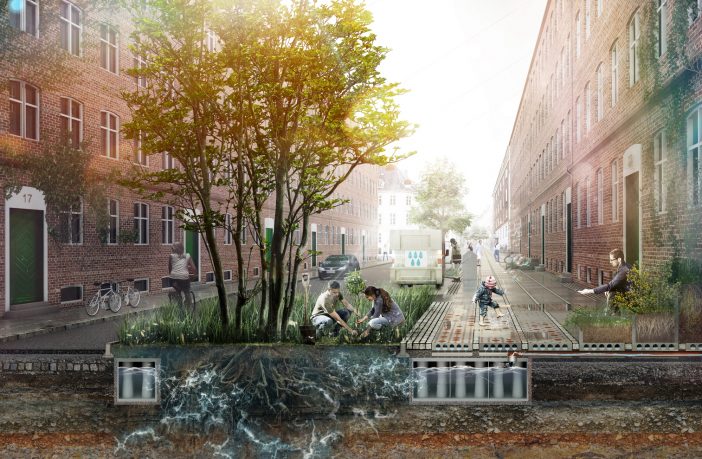Forty percent of the human population lives within 100 kilometers of a coastline, with one in ten living under ten meters above sea level. As climate change induces more volatile flooding events and long-term sea level rises, it is estimated that coastal flooding could cause as much as $1 trillion of damage per year by 2050. We cannot escape the reality that cities, and their populations, are more vulnerable to flooding than ever.
There is therefore a duty on architects, planners, and urbanists to plan and construct resilient responses that can slow, and even reverse, the effects of urban flooding. Around the world, cities are developing action plans that combine global thinking in resiliency with local geographic and urban conditions, all with a common goal of defending urban populations from floods. Below, we outline nine such examples, showcasing differences in scale and approach, as well as unique methods of using flood defenses as agents of social change, and urban regeneration.
Boston
Boston’s coastline spans 47 miles of low-lying land. In response, the Mayor of Boston and SCAPE Landscape Architecture collaborated on a vision to “increase access and open space along the waterfront while better protecting the city during a major flooding event.”
Read more here.
Brooklyn

In the New York City borough of Brooklyn, Bjarke Ingels Group and Field Operations have developed a scheme that combines mixed-use development and a flood-resilient park. The master plan aims to reinstate natural habitats, elevate the standard for urban waterfront resiliency, and transform the way New Yorkers interact with the East River.
Read more here.
Copenhagen

While many urban visions for flood prevention adopt a macro scale, Copenhagen is testing a more pragmatic approach. The Climate Tile, created by THIRD NATURE, IBF, and ACO Nordic, redirects 30% of the projected increase in rainwater expected in the city in the coming years.
Read more here.
Faaborg

The coastal town of Faaborg, Denmark, is facing a high risk of flooding due to climate change. A development plan by Kjellander Sjöberg seeks to revive several closed-down industrial areas, and establish an open channel where water can be regulated and diverted away from the medieval city center.
Read more here.
Hamburg
HafenCIty is a 385-acre new development in Hamburg, and one of the largest urban planning projects in Europe. From its planning stage in the early 1990s, civic leaders demanded that the entire area have the same level of flood security as areas of Hamburg adjacent to dikes. In response, the city is tiered with a 30-foot difference in elevation, from areas designed to flood, to buildings set 28 feet above mean sea level.
Read more here.
Hoboken
In the New Jersey city of Hoboken, in the aftermath of Hurricane Sandy, OMA put forward a comprehensive strategy to “resist, delay, store, discharge” storm surge. Along with hard infrastructure and soft landscaping, the strategy integrates policies for future development, a green circuit to trap water, and water pumps to support drainage.
Read more here.
New York City
In 2019, New York City announced a $10 billion coastal resilience project designed to protect Lower Manhattan. Half a billion dollars will be dedicated to fortifying most of Lower Manhattan with grassy berms in parks and barriers. On the eastern edge of Lower Manhattan, the coastline will be pushed out as much as 500 feet, generating a new public realm while raising the outboard edge to meet sea level rises and storm surge.
Read more here.
Seoul

Rather than obstruct flooding, Seoul has invited water into the fabric of the city itself. The Cheonggyecheon River, once covered by roadways and highways, was renovated from 2003 to become a new central riverfront district. Set below street level, the project is designed to accommodate floodwater during rainy seasons, but also serve as a primary public space.
Read more here.
Venice

The iconic Italian city has suffered from flooding for centuries, with climate change heightening concerns that the city’s urban fabric is at risk. In response, MOSE began construction in 2003. A system of 78 storm gates anchored by four vast retractable gates, the scheme has been designed to seal the city’s lagoon from high tides in fifteen minutes.
Author: Niall Patrick Walsh
This article was first published in Arch Daily and is republished with permission.
















